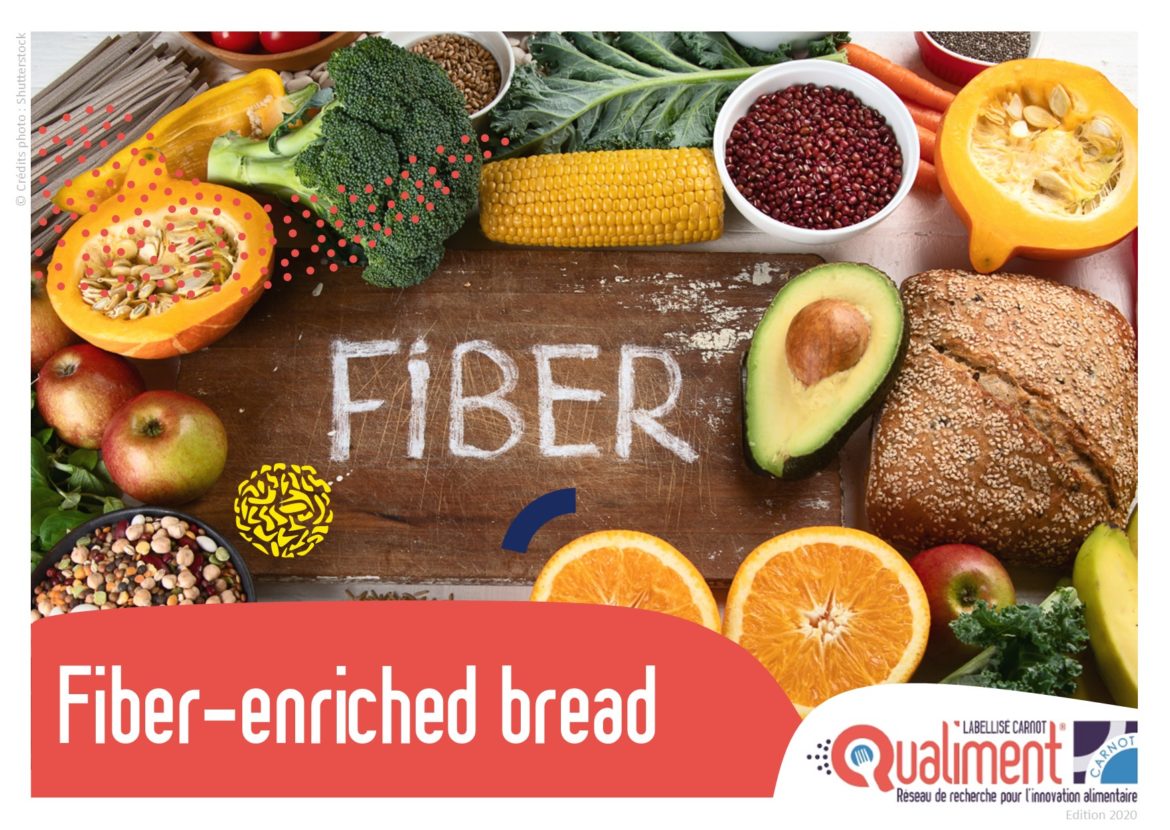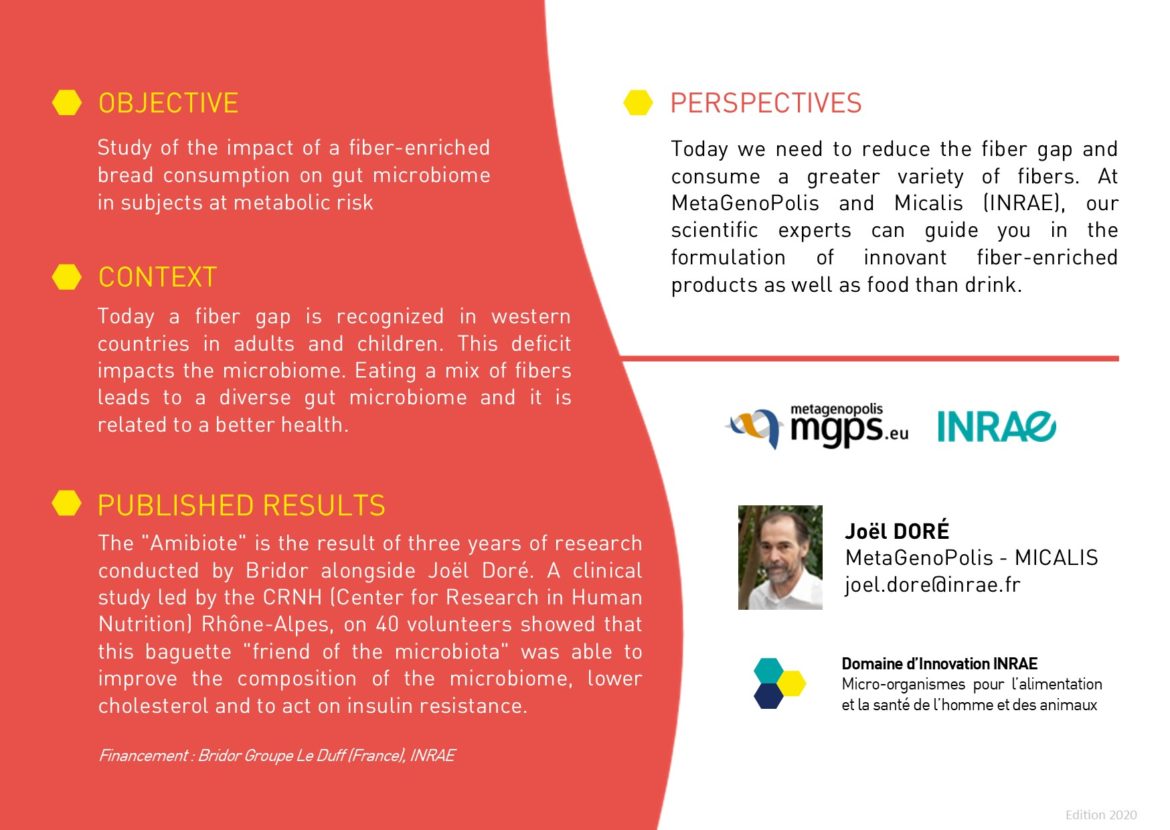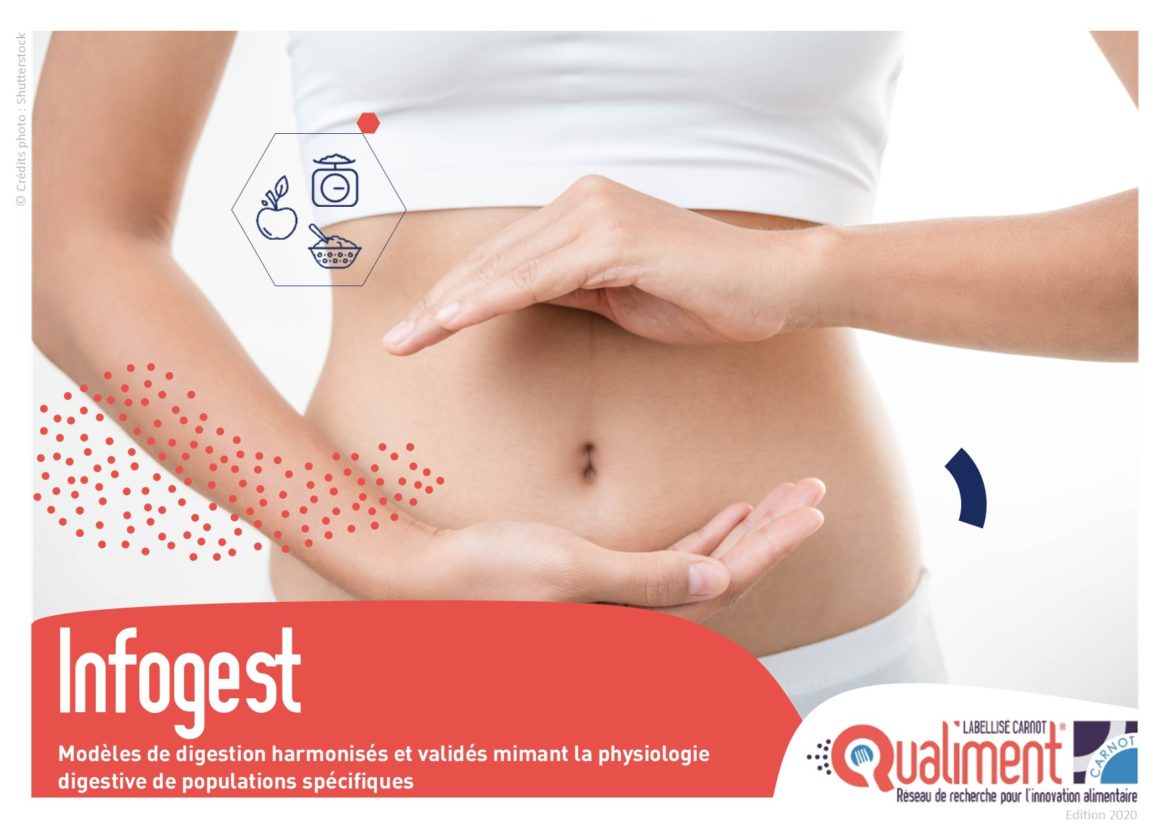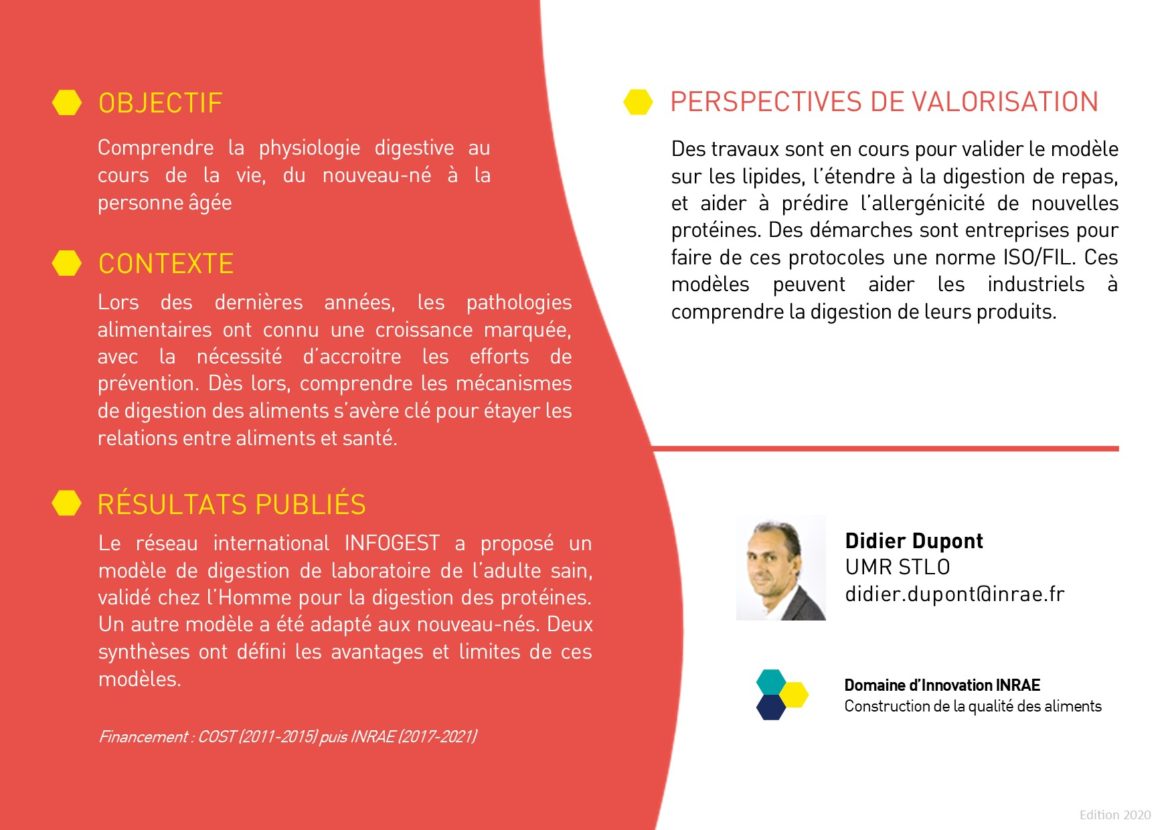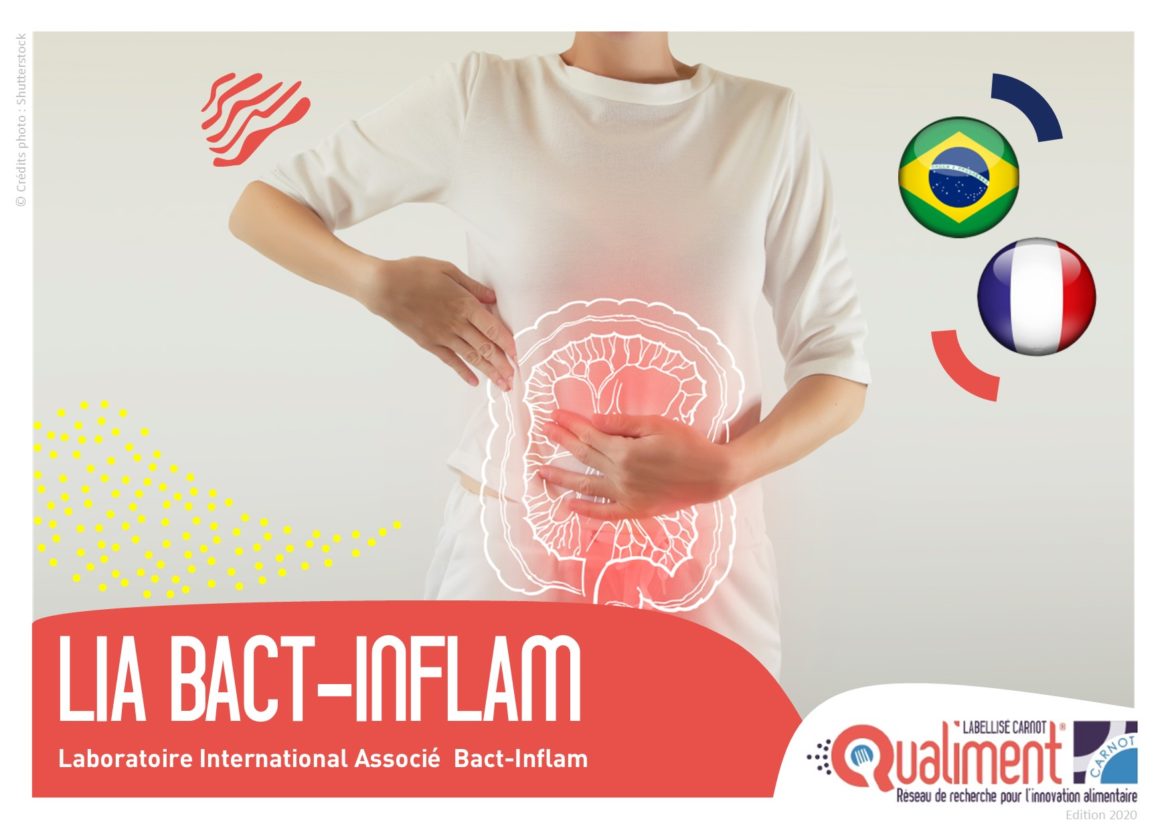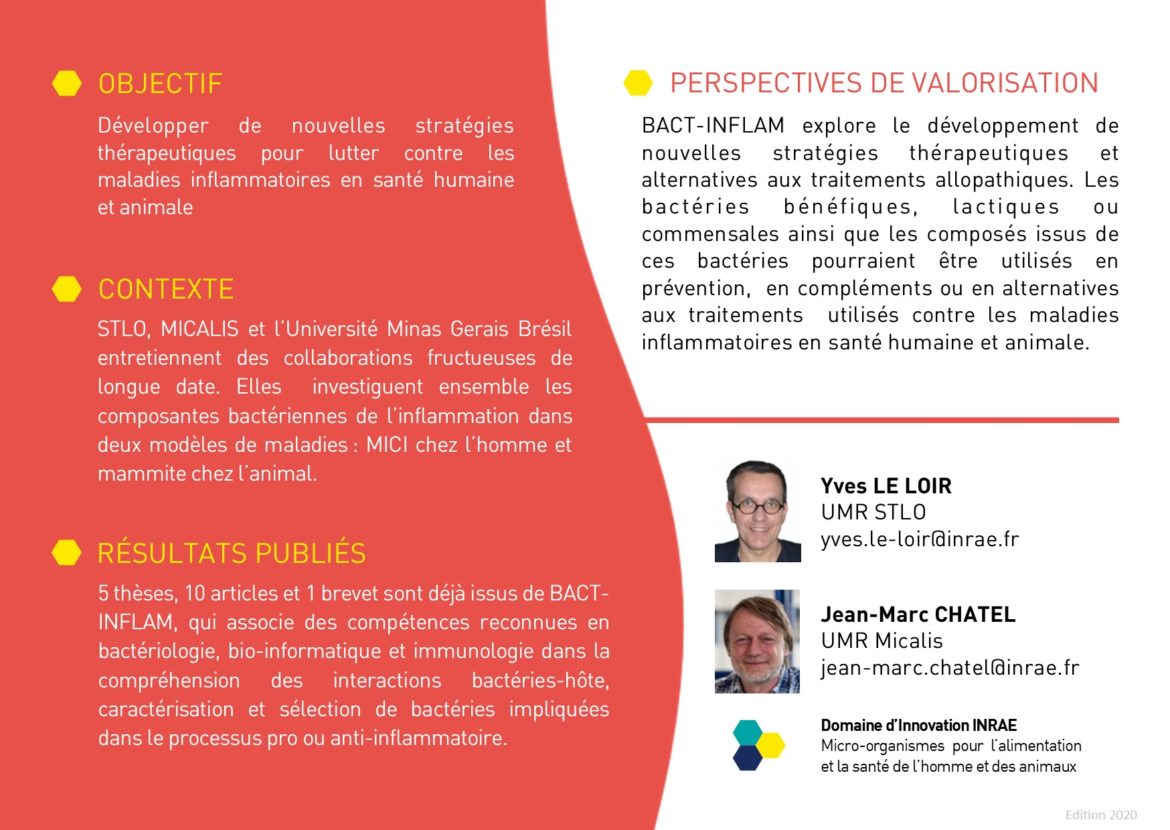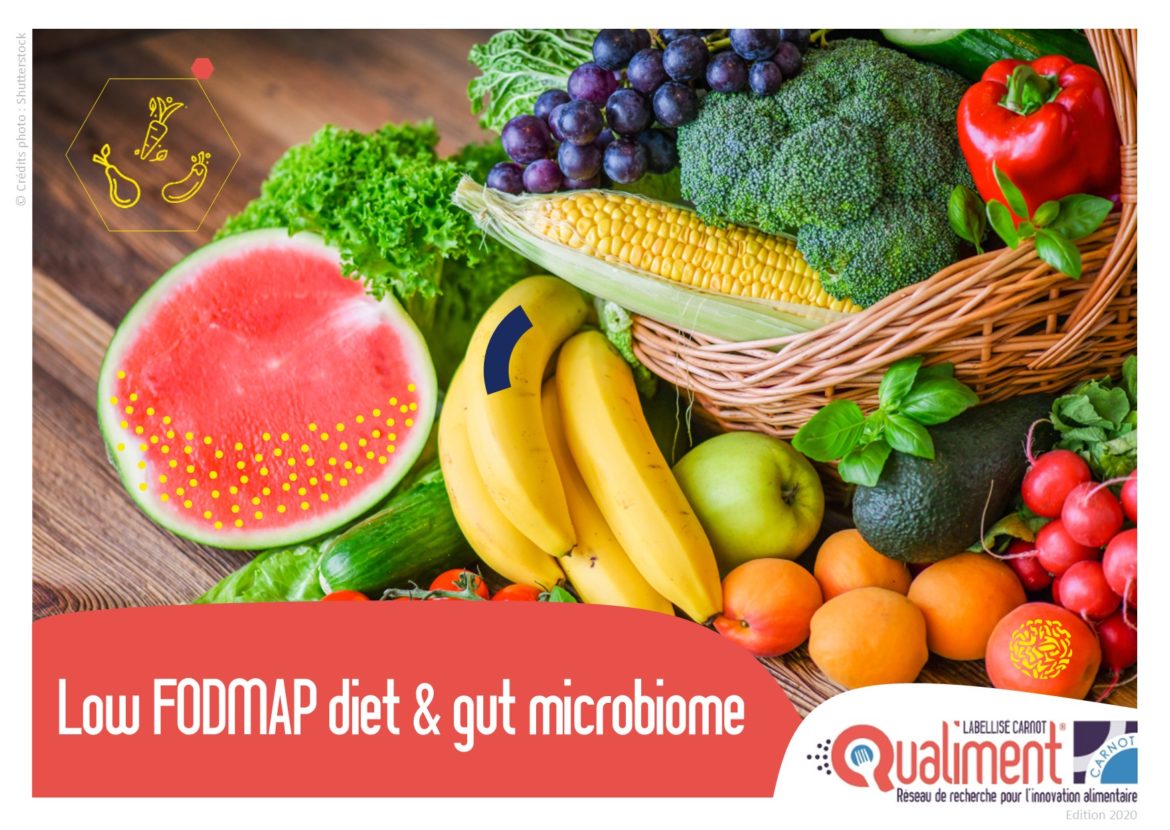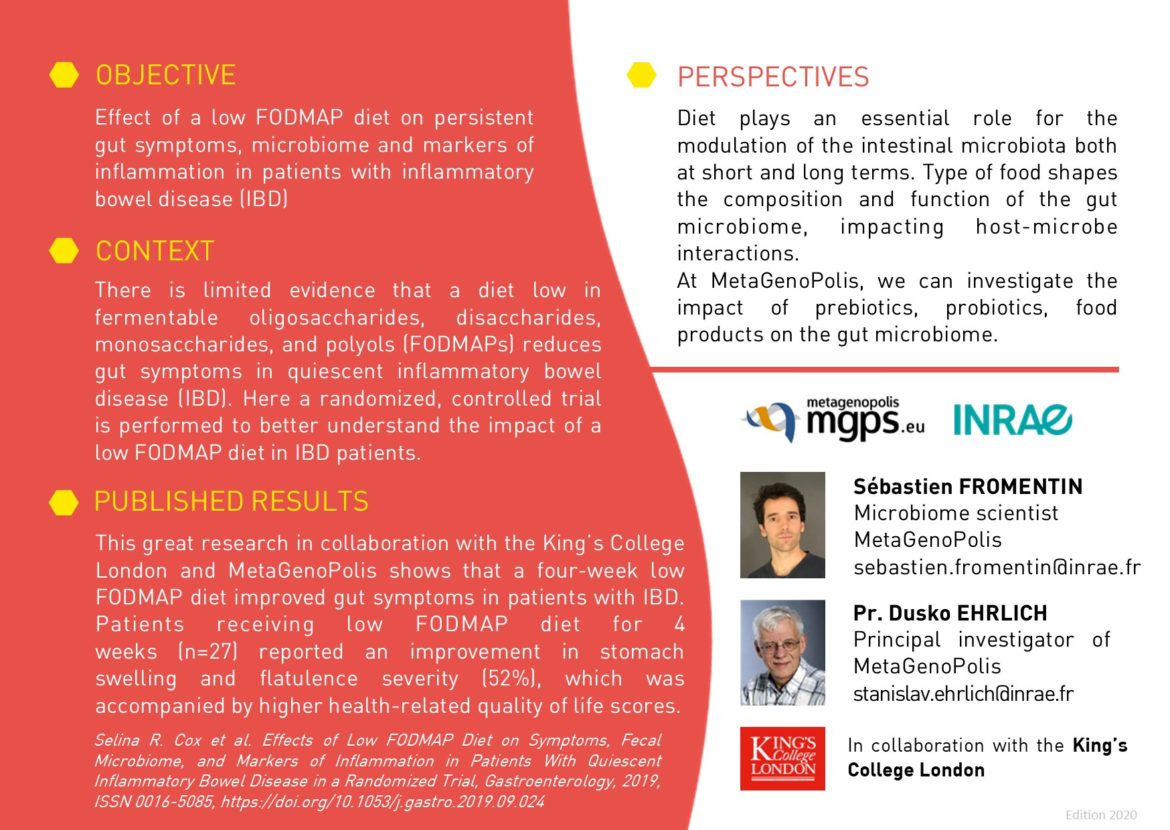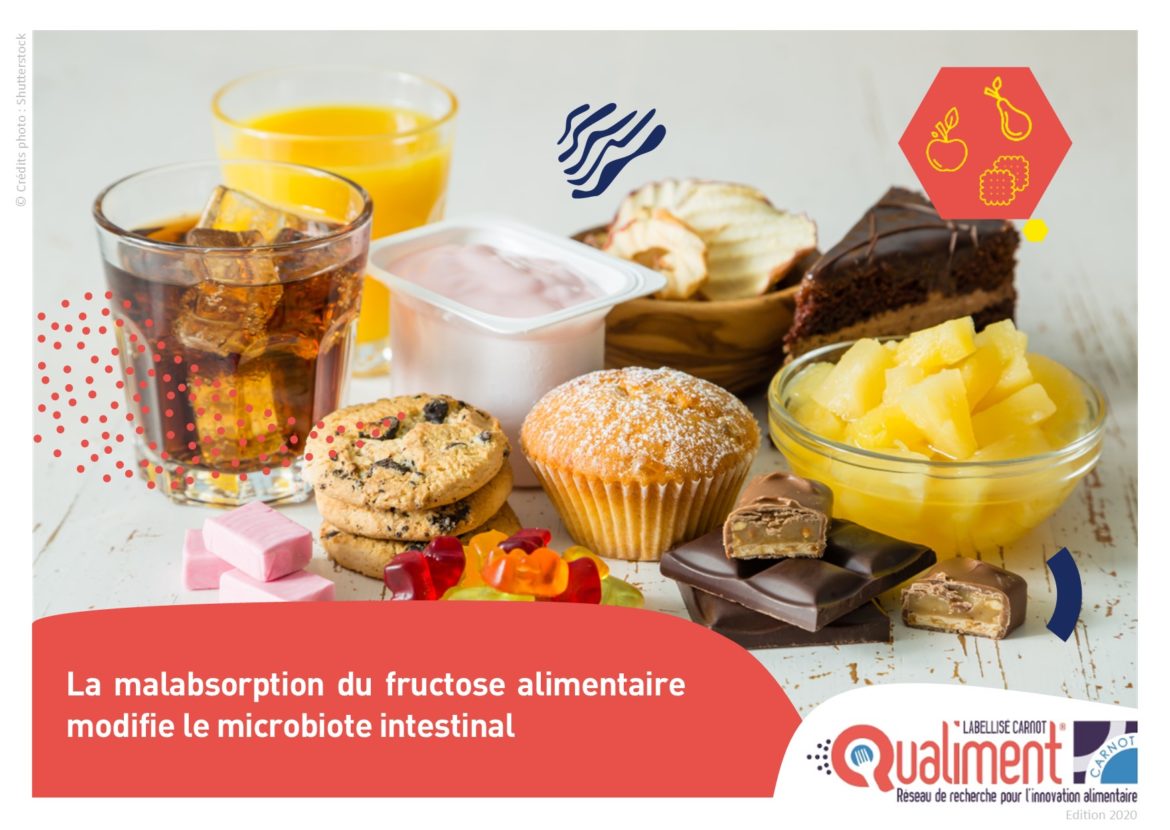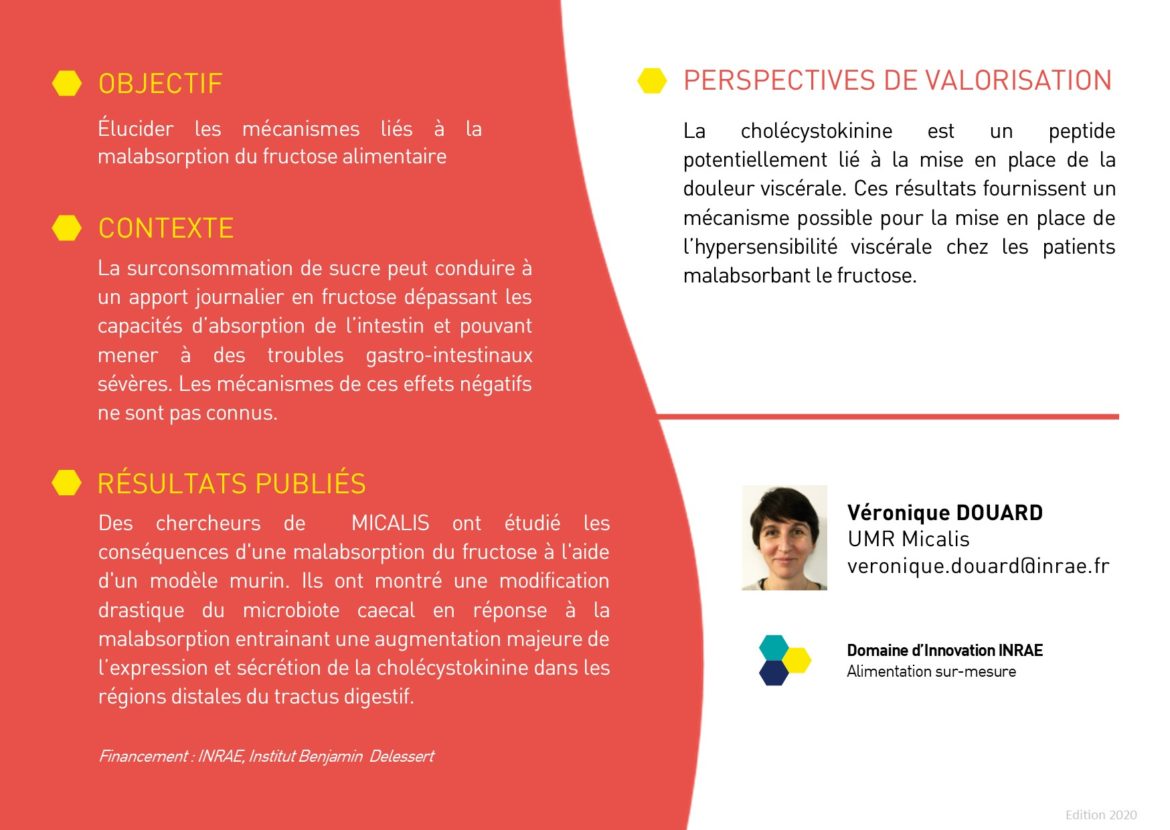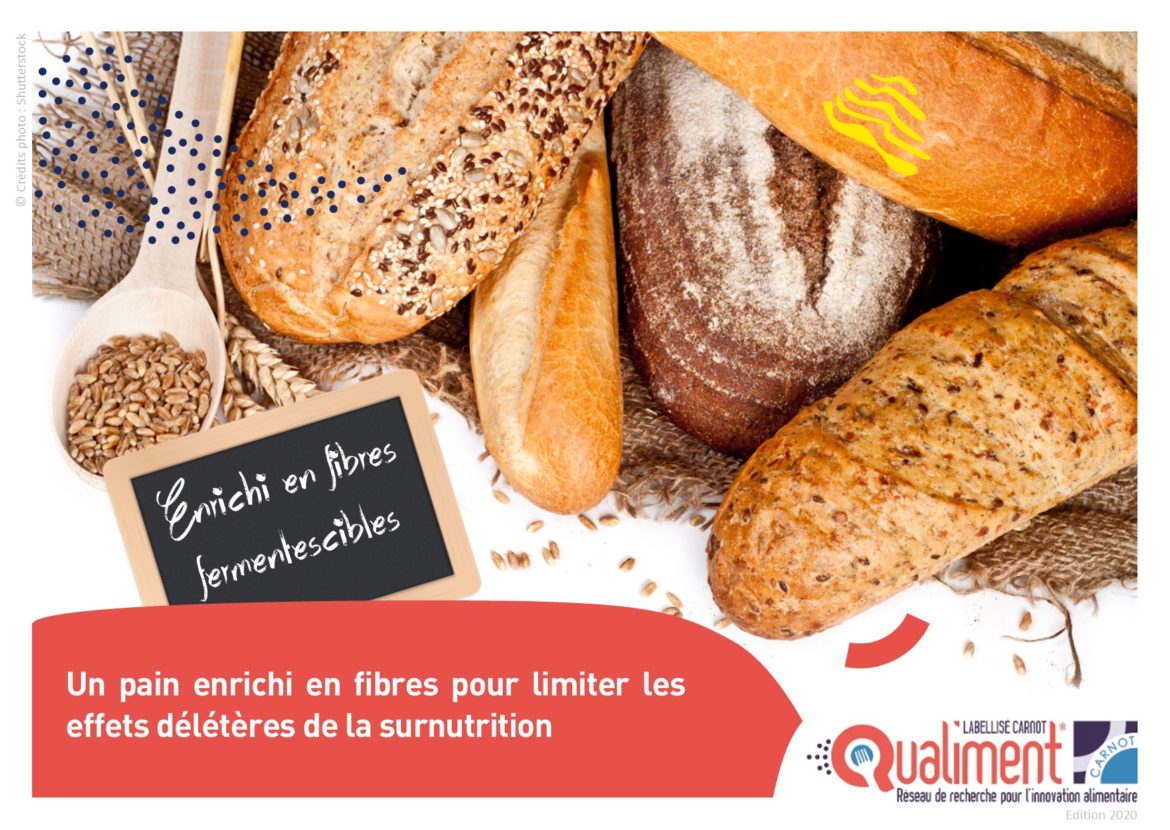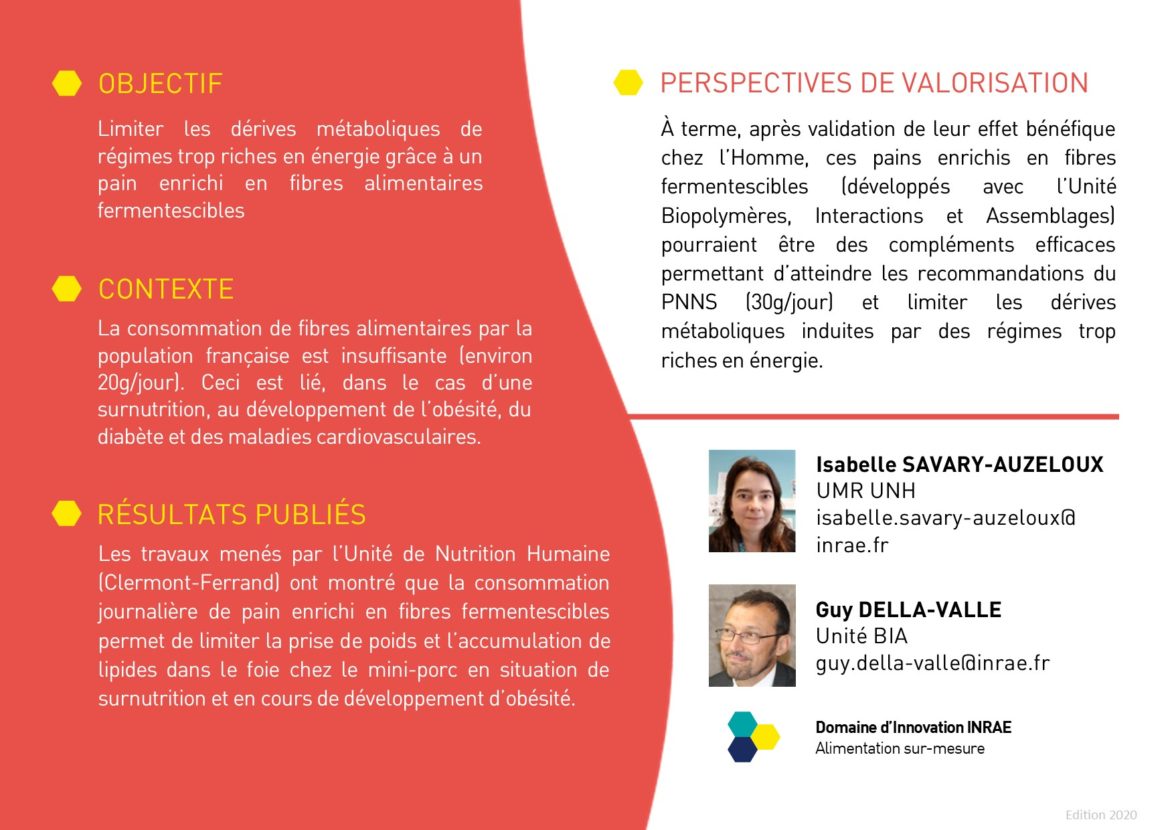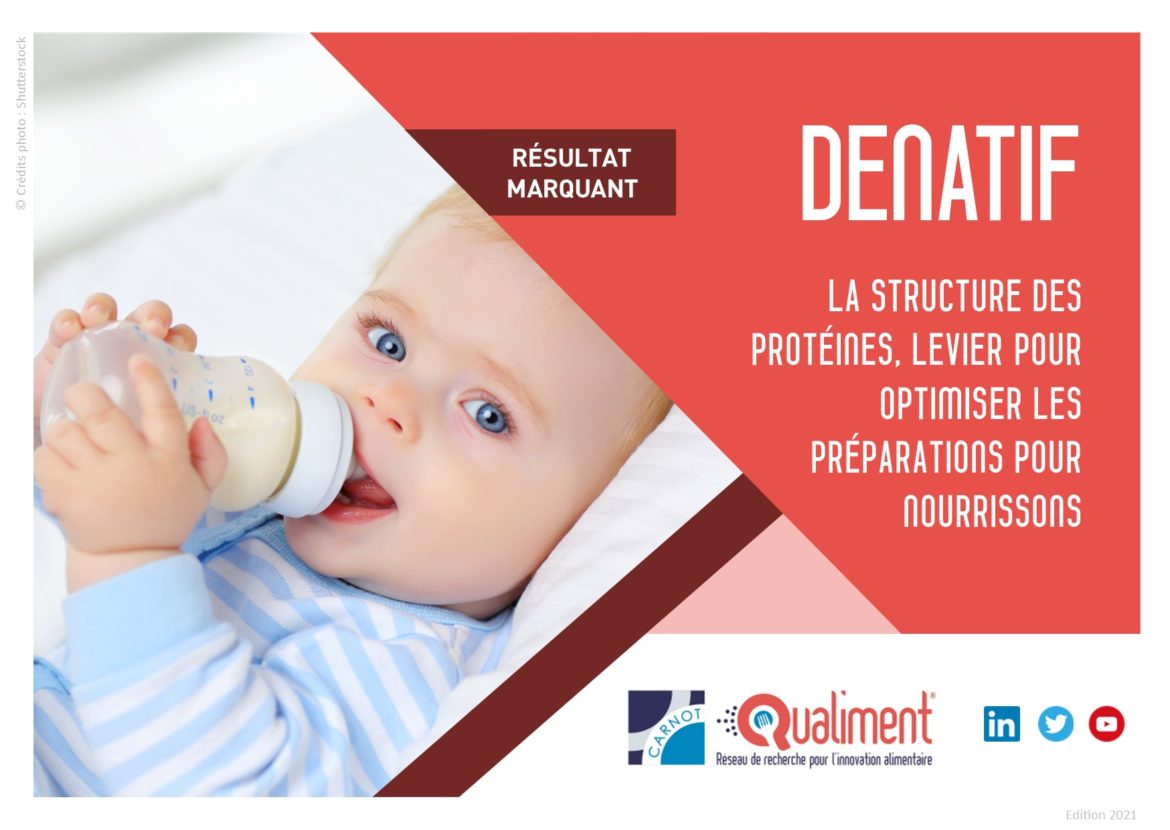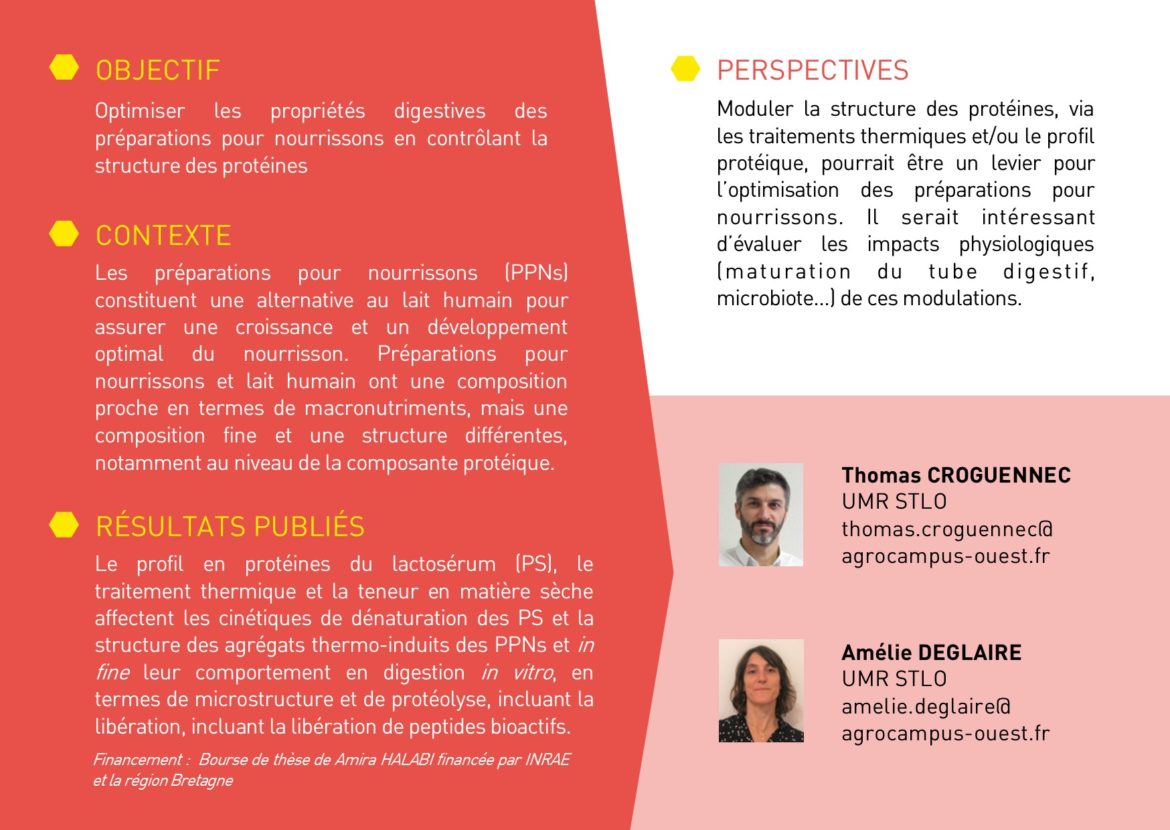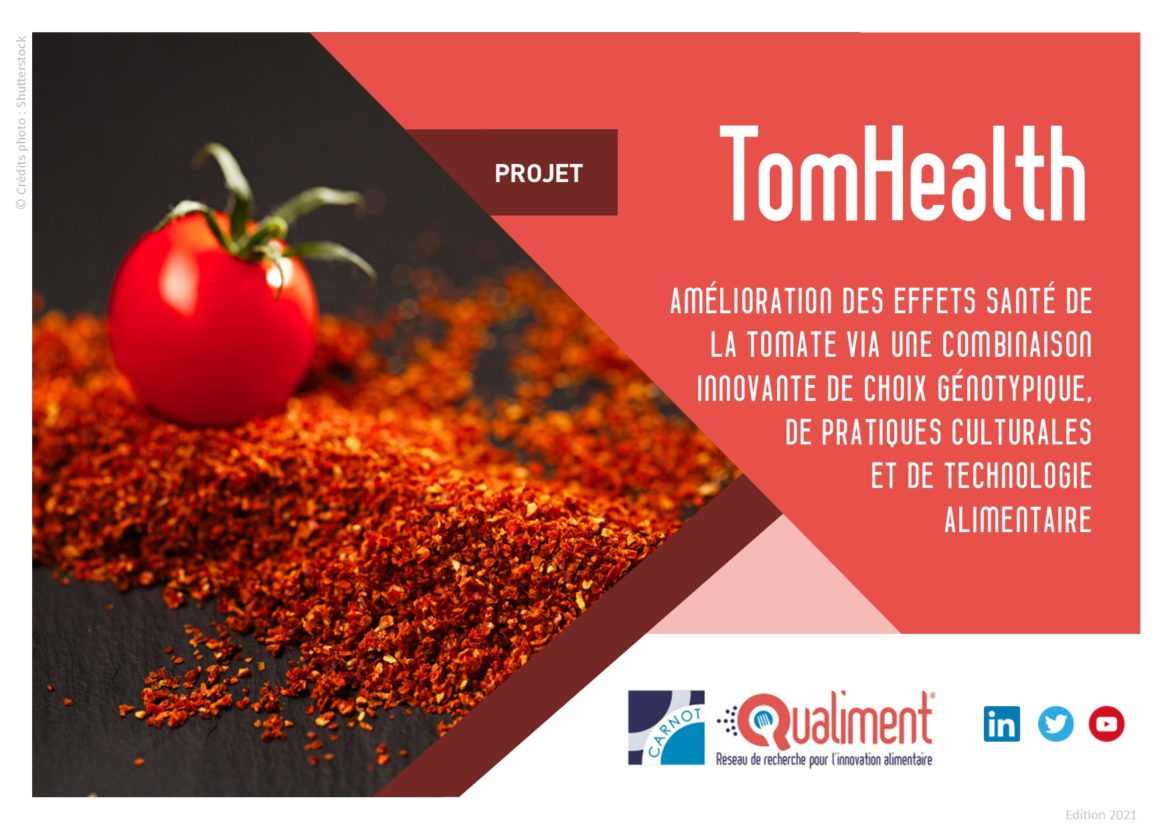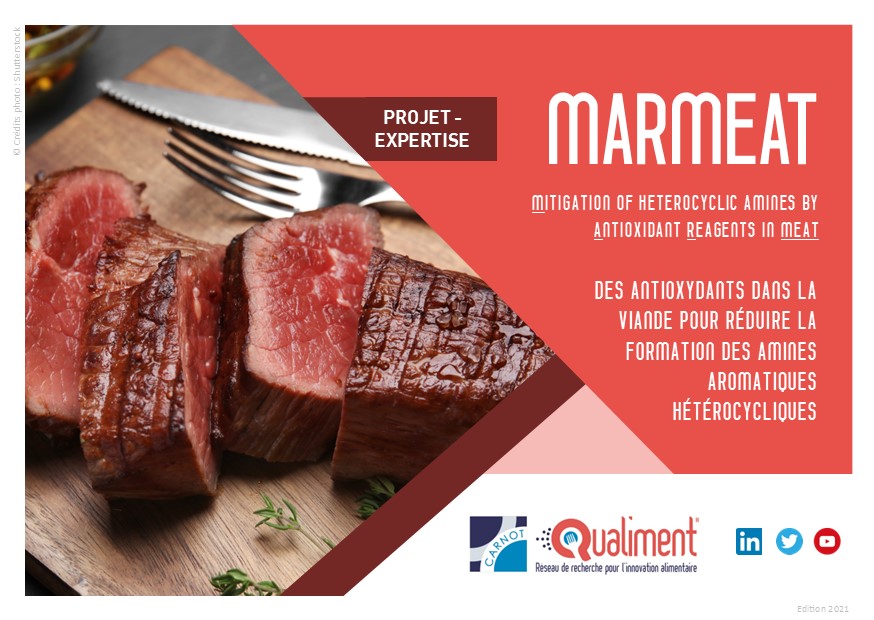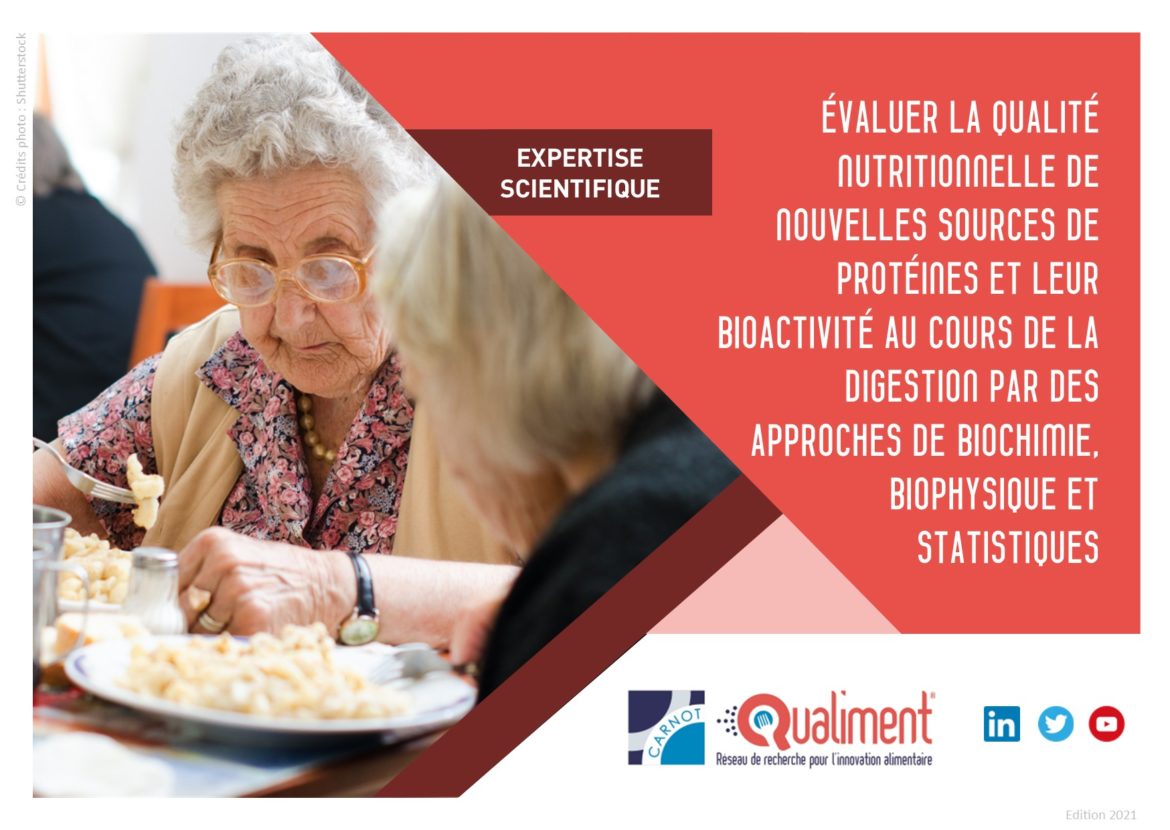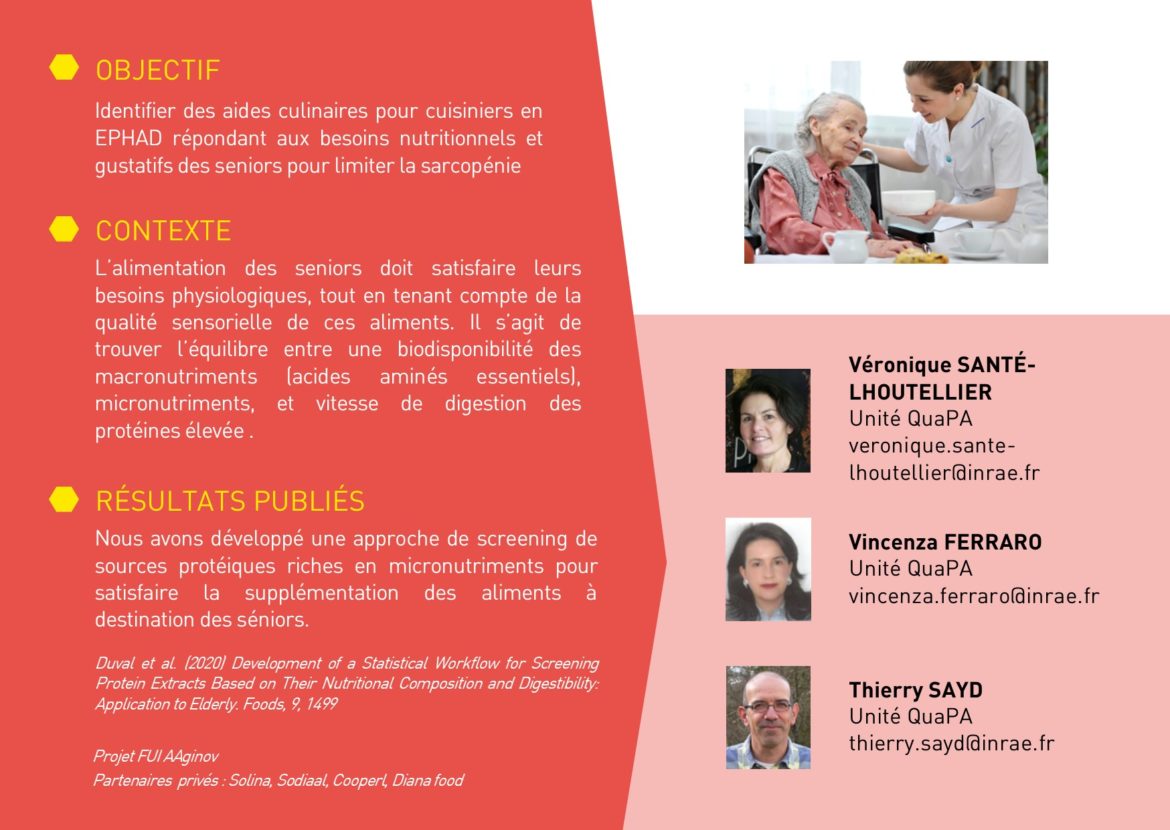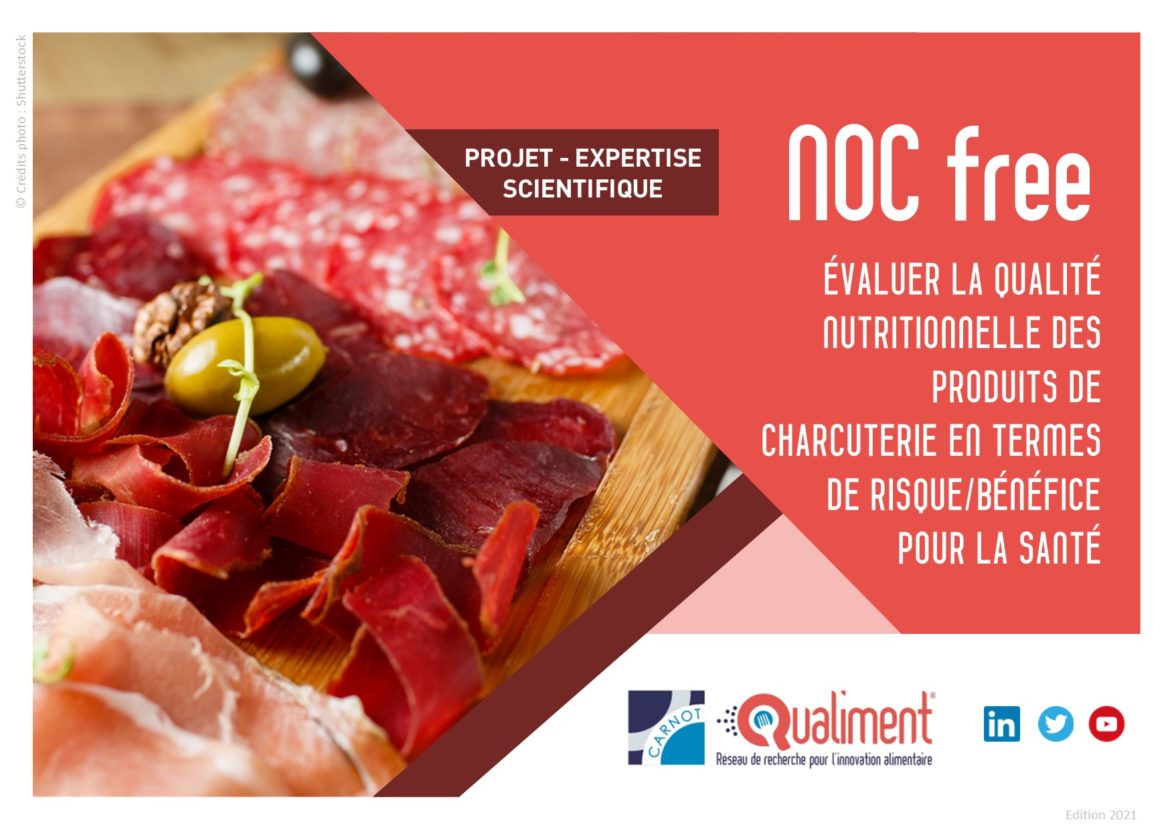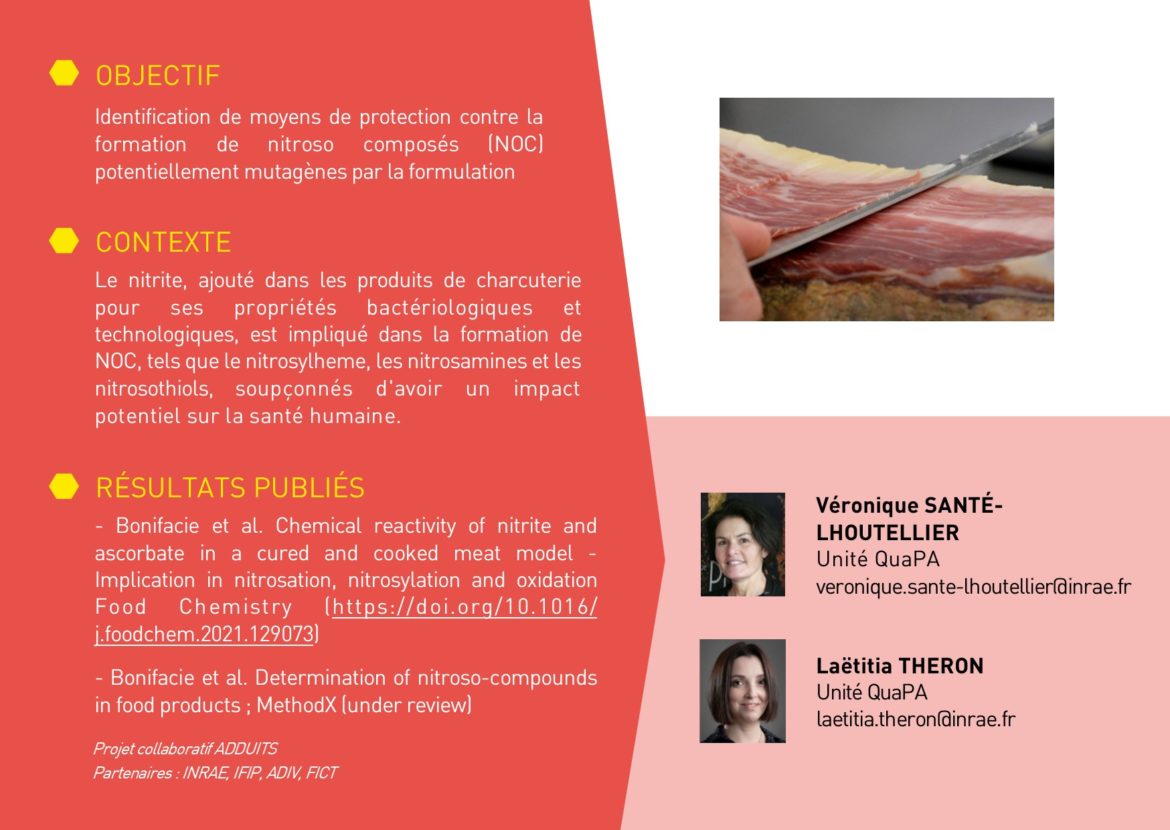Food for health and well-being
 Context and challenges for business innovation
Context and challenges for business innovation
With the advancement of scientific and technological knowledge, and under the impetus of consumers' growing desire to individualize services and to take into account their health concerns, we are witnessing a paradigm shift in the field of human nutrition. This change offers a new field of high value-added innovations, particularly in terms of functional foods adapted to a particular mode of consumption or to specific nutritional needs, but also in terms of "tailor-made" foods targeting specific categories of populations.
Tailor-made food aims to meet consumers' health aspirations, while taking into account the specificities of each individual, linked to their genetic profile, physiology, age, lifestyle, environment, etc. From a scientific point of view, the development of tailor-made food is inherent to the advent of high throughput analytical methodologies, which have allowed a major advance in knowledge.
Carnot's contributions to accompany them in their evolution
To address these major challenges, Qualiment® researchers develop innovative, multidisciplinary expertise targeting all stages of the value chain, including raw material optimization, transformation process improvement, to meet specific biological objectives, adapted to different segments of the population. The access to high-level technological platforms allows scientists to conduct internationally renowned research and to be stakeholders in the elaboration of health policies.
Carnot Qualiment® provides its competences to companies, to help them to propose to consumers products and diets adapted to their nutritional and hedonic needs, their genetic and metabolic profile, their age, their health status and their lifestyle.
Areas of expertise
 Background to date
Background to date
In France, the population over 60 years old is expected to reach more than 24 million individuals in 2050 compared to a little more than 16 million in 2015 (source INSEE). In this population, the risk of undernutrition, which results from insufficient food intake in relation to needs, is becoming very high. Thus, one of the major societal challenges of the coming years is to secure this population in its diet by considering the hedonic characteristics of the offer and the respect of food preferences and habits.
Challenges for business innovation
Undernutrition affects 4 to 10% of people over 65 living at home, and up to 30 to 70% of those in hospital. 46% of elderly people who delegate all or part of their diet are undernourished, or at risk of undernutrition. The physiological causes of undernutrition can be, among others, linked to a decrease in sensory sensitivity and to oral disorders. On these two points, the solutions proposed in terms of food supply are not always satisfactory (poor palatability, unpalatable aspect, etc.).
The importance of two physiological mechanisms (chewing and salivation) as determinants of oral comfort and pleasure in eating has been highlighted. A work of co-creation of recipes with seniors allows a significant increase in caloric intake. Using vegetable-based products, generally appreciated by the elderly, for protein enrichment allows a significant increase in protein and calories consumed.
Carnot's contributions to accompany them in their evolution
Qualiment® researchers have complementary expertise to help companies develop their offer for seniors. In a reverse engineering logic, they are able to accompany them in taking into account the mechanisms in the mouth and the physico-chemical properties of the food bowl to develop food matrices. Qualiment® helps to develop an offer that rethinks the food in all its dimensions (taste, aroma, texture, appearance, etc.) and that takes into account the great inter-individual variability observed in seniors, while reconciling comfort in the mouth and digestive comfort. The evaluation of the link between the properties of the food bolus and the bioavailability of nutrients, in particular proteins, is also one of Carnot's competencies.
 Background to date
Background to date
Physical activity and sports practices affect a large part of the population. In addition to the licensed practitioners, representing the "historical" population of sport, a new population of sportsmen and women has emerged, motivated by the health benefits. Thus, 50% of the French population over 15 years of age regularly practices a sport activity. This practice induces physiological and behavioral changes in relation to diet.
In the same way as technique and sports equipment, food and nutrition play a major role in the sustainability of the practice and in the improvement of performance. Each activity and each type of sport has its own specific recommendations and strategies. For example, hikers, fitness enthusiasts and professional cyclists have different needs, even if the aim is to compensate for physiological disturbances and ensure homeostasis.
Challenges for business innovation
For companies, the prospects for innovation are wide, with the challenge of proposing offers adapted to all types of sports populations, with, on the one hand, the very high level competitor for whom an additional effect on performance is sought in the diet, and, on the other hand, practitioners or patients looking for a health benefit.
Carnot's contributions to accompany them in their evolution
The Qualiment® network opens the way to numerous avenues of innovation, such as research into the synergistic effects of diet and sports practice, analysis of the beneficial or deleterious consequences of avoidance, exclusion or overloading dietary behaviors, or personalized nutrition.
 Background to date
Background to date
When a child is born, breast milk can cover nutritional needs for the first 6 months. However, in situations where the mother is unable to breastfeed, other food intakes are necessary. After 6 months, other foods must be introduced into the diet of the child, who does not yet have the oral skills to consume them as is. Therefore, many nutritional and sensory adaptations are necessary for the feeding of infants.
Recent studies emphasize the importance of early learning in the development of health-promoting eating behaviors, particularly preferences for "recommended" foods such as vegetables and fruits. The major dietary determinants of children's behavior are now being studied, whether in terms of energy density, flavors, aromas or textures.
In addition, certain periods of life, such as the first two years of life, the prenatal period and even the periconceptional period, are now recognized as critical for the health of children and future adults. This is the concept of the developmental origin of disease and health (DOHaD). Initially proposed to explain the etiology of metabolic diseases in adults, it also applies to many other pathologies. Consequently, many research studies aim to propose actions, and in particular nutritional strategies, to optimize the developmental trajectories of children during these critical periods.
Finally, maternal nutrition is a major factor in modulating the early nutritional environment through the placental transfer of nutrients to the fetus and the composition of milk for breastfed children. It particularly impacts the lipid composition of breast milk, as well as its content of oligosaccharides, dietary fibers. Research on the role of fiber in the diet is in full swing, in connection with its role as a modulator of the intestinal microbiota, a key player in intestine-brain communication, immunity and metabolism.
Challenges for business innovation
Reverse engineering allows to define with more and more precision the characteristics of foods that will be appreciated by infants and that will best meet their nutritional needs. This method, which is based on the growing knowledge of the taste, smell and texture preferences of infants at different stages of development, opens up an important field of development to be explored for the development of early childhood foods. Similarly, the knowledge of ingredients that meet the nutritional needs of infants is an important and evolving field of study, to be compared with their acceptability by infants.
Another current challenge is to understand the role of the mother's diet during pregnancy and lactation on the health of the child. Fiber consumption, currently low in Europe, is a major lever in the maternal diet to promote metabolic and neurophysiological adaptations during development and later in adults. The complex nature of foods also requires a better understanding of the interactions between the food matrix, the gut microbiota and the host. These multidisciplinary studies, which rely on high-throughput methodologies (transcriptomics, metabolomics, metagenomics, brain imaging), allow us to better define preventive or interventional nutritional strategies to preserve the health of the child and future adult.
As the mother's diet influences the composition of her intestinal microbiota and her milk, and consequently the intestinal microbiota of her child, it appears crucial to define the components of the maternal diet that have the greatest impact on the dynamics of the establishment and evolution of the microbiota in the young child, in order to propose dietary strategies to the mothers that promote the optimal growth and neurobehavioral development of their child in the short and long term
Carnot's contributions to accompany them in their evolution
Taking into account the evolution of cognitive skills, Carnot Qualiment® researchers have developed the necessary methods to finely evaluate the eating behavior of infants (evaluation of taste, olfactory and consumption skills of foods of different textures, food appreciation, connected scale), or school children (evaluation of the appreciation of a product during a meal, appreciation of salty, sweet and fatty sensations, attitudes towards food).
The work applying these methods allows us to better understand the preferences and skills of children at different stages, leading to the identification of the major food determinants of children's behavior, whether in terms of energy density, flavors, aromas or textures.
The work carried out by Qualiment® researchers also allows to understand how the mothers' diet guides the child's neurobehavioral development and health in the short term, but also its behavioral, physiological and metabolic profile once adult. For example, pre-clinical studies conducted on the pig model have demonstrated the deleterious impact of an unbalanced maternal diet, rich in sugars and lipids, on the activity of the intestinal microbiota, the lipid balance, the behaviours and the neurocognitive plasticity of the piglet, as well as on the metabolism and the neurotransmission of cerebral areas involved in the hedonic circuit and cognition of the young adult. The researchers also showed that it was possible to act positively to preserve the health of the individual and to facilitate its later adaptation to deleterious nutritional environments of Western diet type by introducing fibers with prebiotic activity in the maternal diet.
 Background to date
Background to date
Food allergies currently affect 3% of adults and more than 5% of children in France, a prevalence that has been constantly increasing for several decades. For allergic patients, it is necessary to eliminate the allergenic foods in question: this implies guaranteeing the absence, or the presence of tolerable thresholds for the patient, in processed foods. For young children allergic to cow's milk, advanced milk hydrolysates are proposed, whose absence of residual allergenicity must be verified beforehand.
The combination of extraction methods, immunochemical tests and very specific cellular tests makes it possible to assess the presence of allergens in food matrices, even complex ones, and/or to evaluate residual allergenicity.
Challenges for business innovation
Optimization of extractions and simplification of tests can allow companies to control the absence of cross-contamination in a production chain, from raw materials to finished foods.
The allergenic risk linked to the introduction of "new" foods into the food supply, whether of "traditional" plant or animal origin or more exotic (insects, algae, etc.), is more difficult to assess and involves combinations of in silico, in vitro and in vivo approaches, none of which has been validated to date, and which can only indicate a more or less strong "presumption" of allergenicity
Carnot's contributions to accompany them in their evolution
The Carnot teams are able to evaluate the impact of inclusion in various food matrices and of different thermal or proteolytic processes on the detection of allergens and the fate of their allergenicity: detection of peanut, cow's milk or goat's milk allergens in different matrices, evaluation of the residual allergenicity of cow's milk protein hydrolysates, etc. It should be noted that the difficulties in extracting allergens from certain complex food matrices underestimate their presence.


